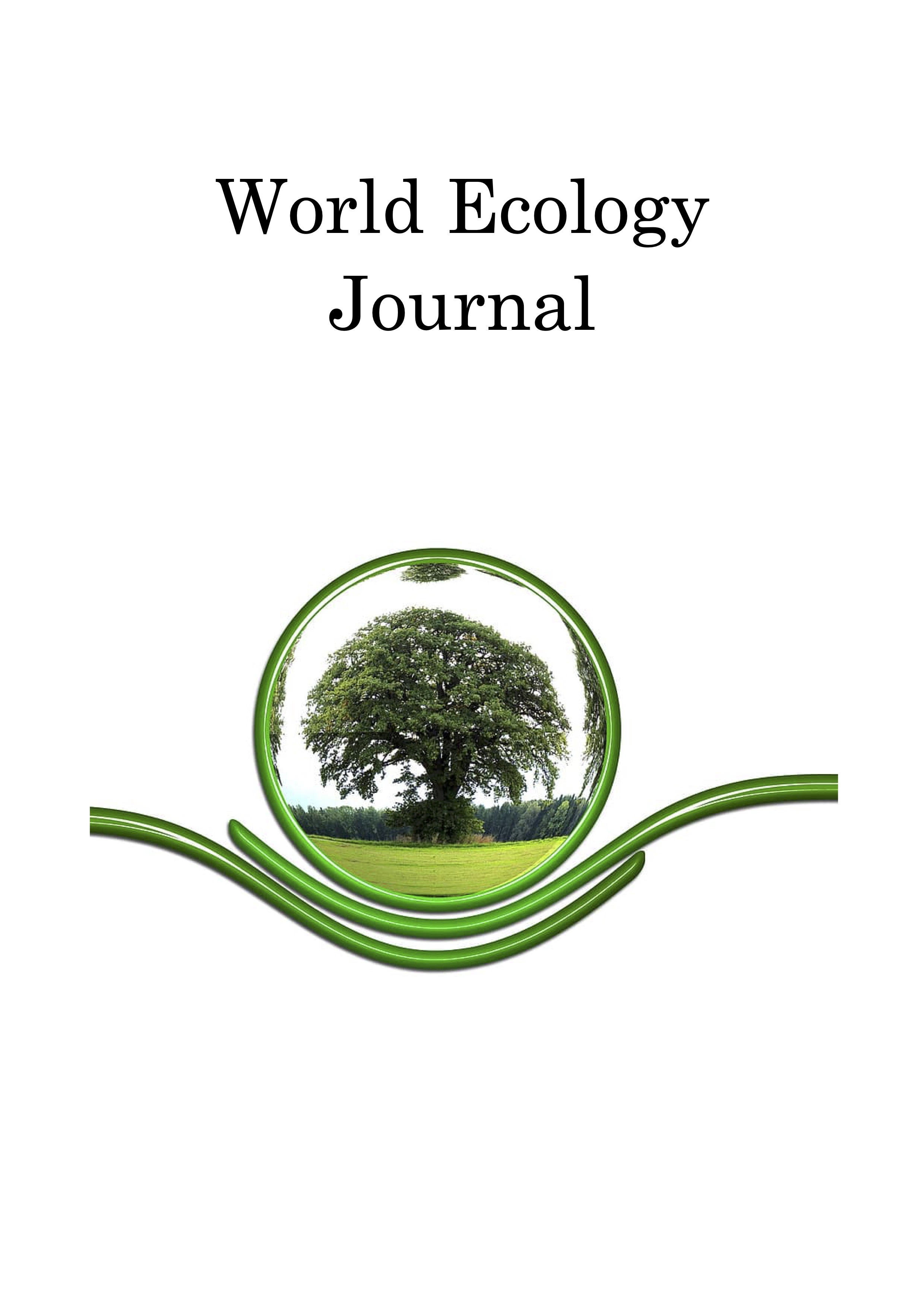Current state and longevity forecast of oak trees in the Gornensky State Nature Reserve
DOI:
https://doi.org/10.25726/worldjournals.pro/WEJ.2020.1.1Keywords:
Pedunculate oak, Quercus robur, mixed stands, oak-maple stands, growing of forest crops, productivity of stands, stability of stands, formation of stands, longevity forecastAbstract
The Gornensky State Nature Reserve, situated in the central part of the Rostov Region, is a protected natural area of regional significance. The reserve contains unique objects, represented by artificially created forest stands of pedunculate oak (Quercus roburL.). In the modern forestry of the Chernozem zone, pedunculate oak continues to take a leading position in terms of its economic value. Much attention is paid to productivity when growing forests. Plantings that are resistant to diseases, pests, and adverse natural phenomena are always productive and have a large stock of wood per unit area.
The dieback of oak forests has become an urgent problem in recent years. The main factors of these processes are damage by pests and infectious diseases. Timely improvement felling of oak trees helps to increase the stability of the stands.
The authors analyzed plantings of petiolate oak formed with the participation of the main accompanying species – Norway maple. Two variants of forest oak plantations in the conditions of a dry oak forest (D1) were studied, and forestry and taxation indicators were determined for different age periods. It is noted that in the absence of planned improvement felling in the periods from 25 to 40 and from 35 to 50 years, there is a drop in the yield class from 1 to 2. Along with this, the dieback of trees is noted, which results in the grassing-down of the soil surface and, accordingly, changes in the growing conditions.
References
2. Agostinelli, M., Cleary, M., Martín, J. A., Albrectsen, B. R., & Witzell, J. (2018). Pedunculate oaks (Quercus robur L.) differing in vitality as reservoirs for fungal biodiversity. Frontiers in Microbiology, 9(AUG). https://doi.org/10.3389/fmicb.2018.01758
3. Bueno-Gonzalez, V., Brady, C., Denman, S., Plummer, S., Allainguillaume, J., & Arnold, D. (2019). Pseudomonas daroniae sp. Nov. and pseudomonas dryadis sp. nov., isolated from pedunculate oak affected by acute oak decline in the uk. International Journal of Systematic and Evolutionary Microbiology, 69(11), 3368–3376. https://doi.org/10.1099/ijsem.0.003615
4. Čater, M. (2015). A 20-year overview of Quercus robur L. Mortality and crown conditions in Slovenia. Forests, 6(3), 581–593. https://doi.org/10.3390/f6030581
5. Čater, M., & Levanič, T. (2015). Physiological and growth response of Quercus robur in Slovenia. Dendrobiology, 74, 3–12. https://doi.org/10.12657/denbio.074.001
6. Cho, S. E., Lee, S. H., Lee, S. K., Seo, S. T., & Shin, H. D. (2018). First report of powdery mildew caused by Erysiphe quercicola on Quercus robur in Korea. Plant Disease, 102(7), 1455. https://doi.org/10.1094/PDIS-11-17-1826-PDN
7. Dyderski, M. K., Chmura, D., Dylewski, Ł., Horodecki, P., Jagodziński, A. M., Pietras, M., … Woziwoda, B. (2020). Biological Flora of the British Isles: Quercus rubra. Journal of Ecology, 108(3), 1199–1225. https://doi.org/10.1111/1365-2745.13375
8. Fallon, B., Yang, A., Lapadat, C., Armour, I., Juzwik, J., Montgomery, R. A., & Cavender-Bares, J. (2020). Spectral differentiation of oak wilt from foliar fungal disease and drought is correlated with physiological changes. Tree Physiology, 40(3), 377–390. https://doi.org/10.1093/treephys/tpaa005
9. Field, E., Schönrogge, K., Barsoum, N., Hector, A., & Gibbs, M. (2019). Individual tree traits shape insect and disease damage on oak in a climate-matching tree diversity experiment. Ecology and Evolution, 9(15), 8524–8540. https://doi.org/10.1002/ece3.5357
10. Gennadevich, B. S., Evgenievich, Z. I., & Valerievna, F. L. (2014). Developmental stability study of Quercus Robur: Industrial and abiotic factors influence. Advances in Environmental Biology, 8(17), 102–109.
11. Korchagin O.M., Tsaralunga V.V., Tsaralunga A.V. (2018). Oak forest biocoenoses: overview of the issue of their environmental sustainability and possible ways to enhance it. International journal of advanced biotechnology and research, 9(4), 397-402.
12. Kruzhilin, S. N., Taran, S. S., Semenyutina, A. V, & Matvienko, E. Y. (2018). Growth peculiarities and age dynamics of Quercus robur L. Formation in steppe region conditions. Kuwait Journal of Science, 45(4), 52–58.
13. Łakomy, P., Kuźmiński, R., Mucha, J., & Zadworny, M. (2019). Effects of oak root pruning in forest nurseries on potential pathogen infections. Forest Pathology, 49(3). https://doi.org/10.1111/efp.12513
14. Meunier, J., Bronson, D. R., Scanlon, K., & Gray, R. H. (2019). Effects of oak wilt (Bretziella fagacearum) on post harvest Quercus regeneration. Forest Ecology and Management, 432, 575–581. https://doi.org/10.1016/j.foreco.2018.09.056
15. Mikhina, E., Taniykevich, V., & Mikhin, V. (2019). Agri-environmental role of protective forest plantations. In IOP Conference Series: Earth and Environmental Science (Vol. 392). https://doi.org/10.1088/1755-1315/392/1/012066
16. Mohr, D., Simon, M., & Topp, W. (2005). Stand composition affects soil quality in oak stands on reclaimed and natural sites. Geoderma, 129(1–2), 45–53. https://doi.org/10.1016/j.geoderma.2004.12.029
17. Sabernasab, M., Jamali, S., Marefat, A., & Abbasi, S. (2019). Molecular and Pathogenic Characteristics of Paecilomyces formosus, a New Causal Agent of Oak Tree Dieback in Iran. Forest Science, 65(6), 743–750. https://doi.org/10.1093/forsci/fxz045
18. Semenyutina, A., Podkovyrova, G., Khuzhakhmetova, A., Svintsov, I., Semenyutina, V., & Podkovyrov, I. (2018). Engineering implementation of landscaping of low-forest regions. International Journal of Mechanical Engineering and Technology, 9(10), 1415–1422.
19. Seraya, L. G., Larina, G. E., Griboedova, O. G., Petrov, A. V, & Zhukov, F. F. (2019). Phytomonitoring of woody plants in the urban agglomeration. In IOP Conference Series: Earth and Environmental Science (Vol. 350). https://doi.org/10.1088/1755-1315/350/1/012038
20. Stojanović, M., Sánchez-Salguero, R., Levanič, T., Szatniewska, J., Pokorný, R., & Linares, J. C. (2017). Forecasting tree growth in coppiced and high forests in the Czech Republic. The legacy of management drives the coming Quercus petraea climate responses. Forest Ecology and Management, 405, 56–68. https://doi.org/10.1016/j.foreco.2017.09.021




